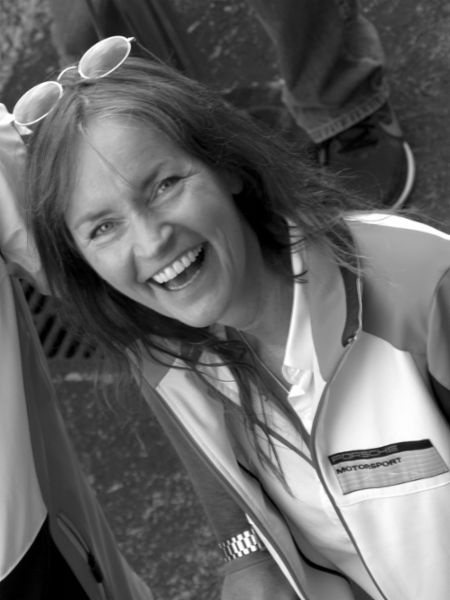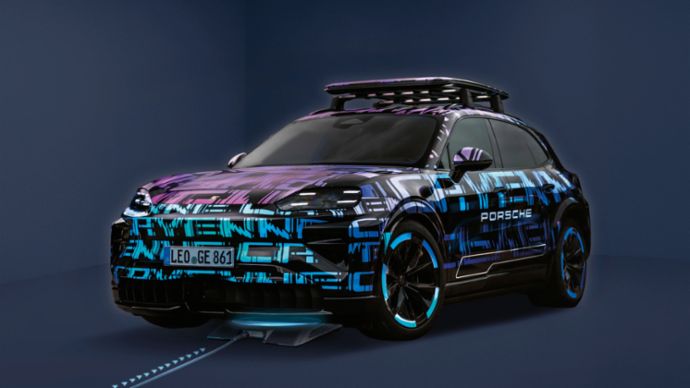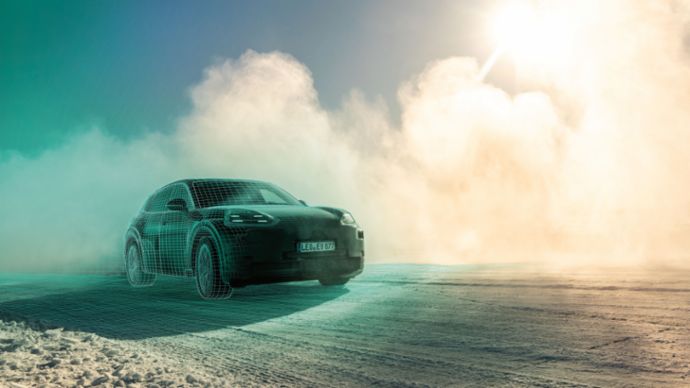Big Loop
Artificial intelligence (AI) already plays an important role at Porsche. In the near future, machine learning will also be able to directly optimize functions in Porsche sports cars on the road.
Illustration by Design Hoch Drei
Big Loop means the permanent exchange of data between a vehicle and its back end, the data processing in the background. Using AI, the Big Loop allows continuous optimization of driver assistance systems and other functions. In simple terms, using Adaptive Cruise Control (ACC) as an example, this is how it could work in the future: the vehicle’s multiple sensors detect every movement and position—including the distance to the vehicle in front. The on-board computer continuously sends such information as an anonymized flood of data via the cellular network to a cloud. In this powerful IT infrastructure, the data is now processed using specifically developed algorithms. Improved functions or new use cases developed on this basis can first be tested in background operation—what is known as shadow mode. While the ACC acts in its normal fashion, the new variant runs like a shadow in a separate hardware environment.
The software developers evaluate each AI-supported solution and decide whether it should now become active for customers too. If their verdict is positive, the update is installed in the vehicle via the cellular network as an over-the-air update. This closes the Big Loop.
In the future, this integrated data loop and the lightning-fast simulation in the development department will significantly shorten lengthy cycles. An important step has already been taken on the way there: the Taycan is the first Porsche model to be ready for over-the-air updates.
The basis for the best possible optimization in the Big Loop is an extensive database. Here, Porsche has an advantage due to its cooperation with other brands of the Volkswagen Group: the huge shared foundation of data software development is centrally bundled in the specially founded Cariad (I Am Digital) company. Supported by this data, systems and functions are developed that are given their distinctive DNA by Porsche engineers: assistance systems increase safety and convenience. They can relieve congestion, help with parking, and even act as trainers. However, the decision remains an individual one and pure self-driving is always an option with Porsche.




